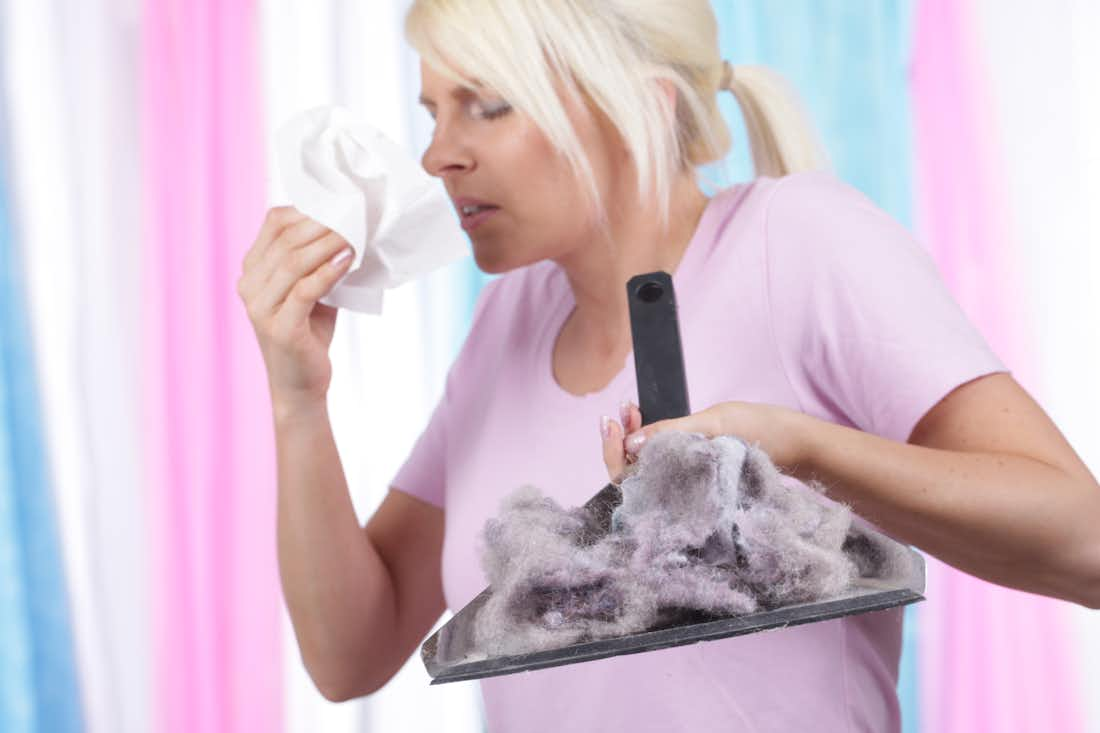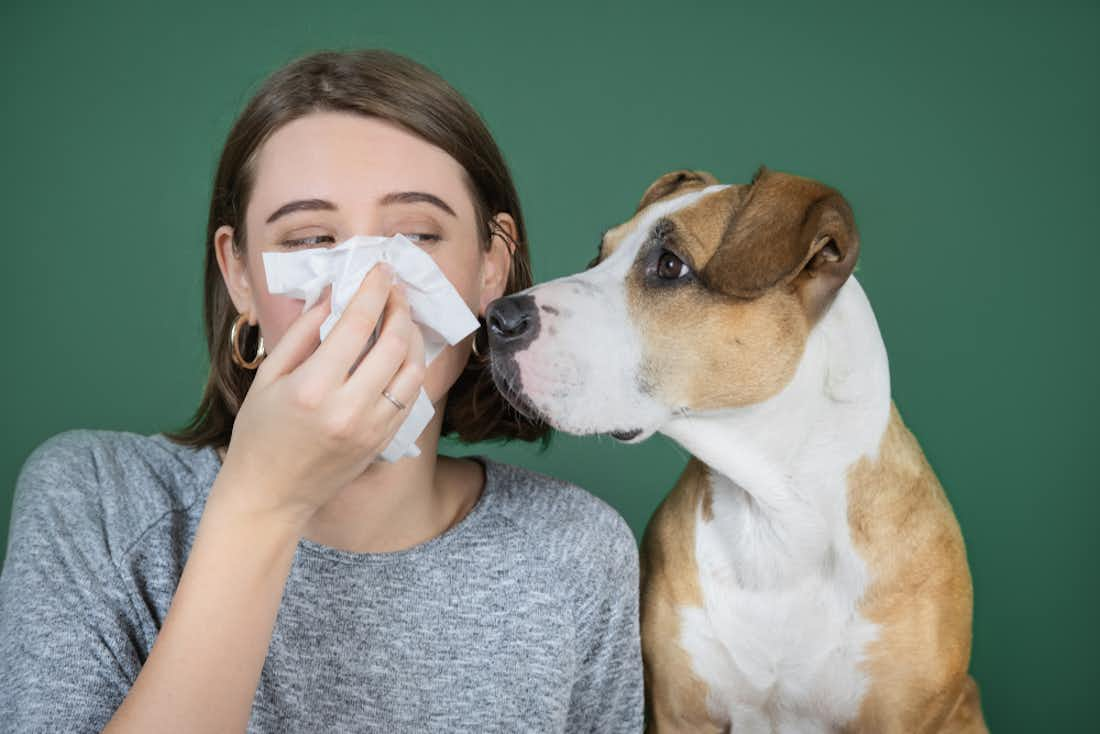Oct 25, 2023
Do Fall Leaves Cause Allergies?
4 minute read
As the leaves change color and fall from the trees during the autumn season, many people eagerly welcome the cooler weather and all the beauty that goes along with it. However, for some individuals, this beautiful display can bring about a less enjoyable experience – fall allergies triggered by outdoor mold. In this blog post, we'll explore the link between mold and leaves, understand the symptoms of leaf mold allergies, and discover ways to minimize their impact on your health and well-being.
What’s the Connection Between Mold and Leaves?
Mold can grow indoors but it can certainly grow outside as well. When fall arrives, leaves begin to accumulate on the ground. As they decompose, they create a cozy environment for mold to thrive. This is especially true in damp and shaded areas. Mold spores in the air can easily attach to these fallen leaves, leading to a surge in mold allergen exposure.
What are the Symptoms of Leaf Mold Allergies?
Leaf mold allergies can cause a range of uncomfortable symptoms, including:
Sneezing and runny nose
Leaf mold allergies often trigger sneezing fits as your immune system releases histamines in response to mold spores, causing nasal irritation. This histamine release also leads to a runny or congested nose, with excess mucus attempting to flush out allergens while swollen blood vessels block nasal passages.
Itchy or watery eyes
Mold allergens can be particularly bothersome to the eyes. They may cause persistent itching, leading to the urge to rub your eyes. This can result in redness as the sensitive eye tissues become irritated, and excessive tearing as your body tries to wash away the allergens.
Coughing and wheezing
Exposure to leaf mold can exacerbate coughing, especially if you have asthma or another respiratory condition. Mold spores can inflame your airways, narrowing them and making breathing more challenging. Wheezing, a high-pitched whistling sound during breathing, is a common symptom of this respiratory irritation.
Skin irritation
Direct contact with leaf mold can cause skin problems for some individuals. This may manifest as red, itchy rashes or hives. These skin reactions are typically the result of allergenic substances from mold spores coming into contact with the skin.
Fatigue
Allergic reactions, including those triggered by mold allergies, can be exhausting. The constant sneezing, congestion, and other symptoms can leave you feeling drained and lethargic. This fatigue can affect your overall well-being and daily activities.
Who’s Typically Affected by Fall Mold Allergies?
Leaf mold allergies can affect anyone, with higher risk for those who have existing allergies, asthma, or mold sensitivity. Outdoor enthusiasts and people living in wetter regions may also be more susceptible. Children, the elderly, and those with allergic rhinitis may experience intensified symptoms when exposed to mold spores from decaying leaves.
It's important to note that while these groups may be more at risk, leaf mold allergies can affect anyone, and individual responses to allergen exposure can vary widely. If you suspect you have leaf mold allergies or experience symptoms, regardless of your risk factors, it's advisable to consult with a healthcare professional for proper diagnosis and management. Cleared by LifeMD is here to help. You can make an appointment to talk online with a board-certified doctor or nurse practitioner.
How to Prevent or Treat Leaf Mold Allergies
Now that you understand the symptoms, let's explore some effective strategies to minimize the impact of leaf mold allergies:
Wear protective gear
If you need to handle leaves, especially when raking or gardening, it's essential to wear appropriate protective gear. This includes wearing a mask to prevent inhaling mold spores, gloves to minimize direct skin contact, and long sleeves to provide additional protection against allergen exposure.
Keep indoor air clean
Mold spores can enter your home through open windows and doors, so it's essential to maintain clean indoor air. Consider using HEPA filters in your home's heating, ventilation, and air conditioning (HVAC) system to trap airborne mold spores. Additionally, using an air purifier equipped with a HEPA filter can further reduce indoor mold allergen levels, especially in bedrooms and living areas.
Use allergy medications
Over-the-counter antihistamines and decongestants can help alleviate allergy symptoms such as sneezing, runny nose, and itching. These medications can provide temporary relief and are readily available at pharmacies. However, it's advisable to consult your doctor for personalized recommendations and to discuss any potential side effects or interactions with other medications you may be taking. At Cleared by LifeMD, licensed healthcare professionals can talk through your symptoms with you and prescribe you allergy medications online.
Stay informed about mold spore counts
Mold spore counts can often be found in weather reports or through allergy-specific apps and websites. On days when mold spore counts are high, consider limiting your outdoor activities, especially during peak mold-spore-producing times like the early morning and late evening. Referring to a mold allergy map can be a great idea as well.
What is a Mold Allergy Map?
A mold allergy map is a visual representation or geographical tool that provides information about the prevalence and distribution of mold spores or allergenic mold species in specific regions or areas. These maps are typically based on data collected from mold spore counts and environmental conditions.
Here's how a mold allergy map typically works:
- Data collection. Mold spore counts are collected from various locations and monitored over time. These counts are often collected through air sampling devices, which capture and identify different types of mold spores present in the air.
- Geographical analysis. The collected data is then analyzed geographically. Researchers and environmental agencies use this data to determine the concentration and types of mold spores present in different regions or areas.
- Mapping. The information is presented visually on a map, typically using color-coding or other symbols to indicate the concentration of mold spores or the prevalence of specific allergenic mold species in different locations.
- Accessibility to the public. These maps are often made available to the public through websites, local health departments, or environmental agencies. They can be a useful resource for individuals with mold allergies to understand when and where mold spore counts are likely to be higher.
Mold allergy maps can be especially valuable for people who suffer from mold allergies because they provide insights into when and where mold spore concentrations may be elevated. This information can help you plan outdoor activities, minimize exposure during high mold spore count days, and take preventive measures to manage your allergies more effectively.
Enjoy Fall to the Fullest
Fall allergies caused by leaf mold can put a damper on the season's beauty, but with proper precautions and management, you can still enjoy the vibrant colors and crisp air without suffering from annoying allergy symptoms. By understanding the connection between mold and leaves and taking steps to reduce your exposure, you can make the most of this wonderful time of year.
Authors

Dr. Payel Gupta
Medically reviewed by Dr. Payel Gupta



